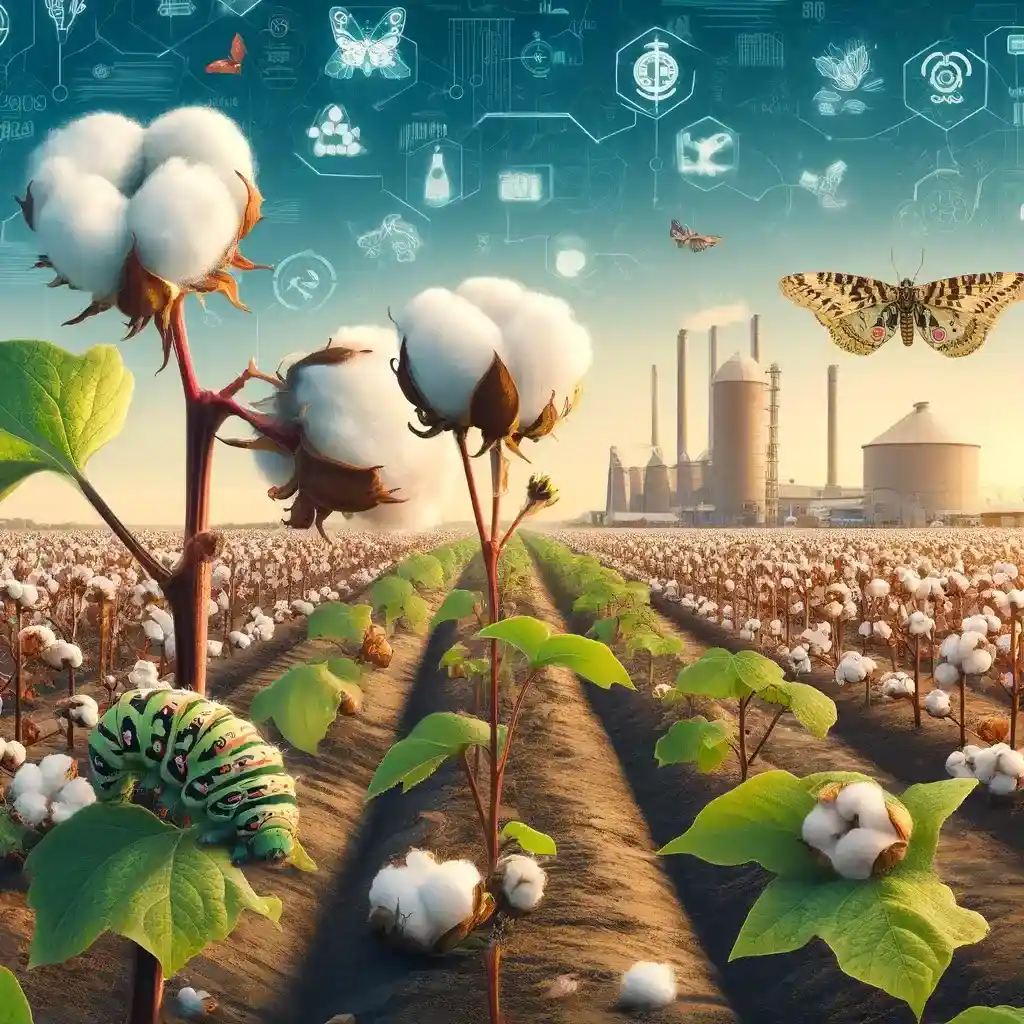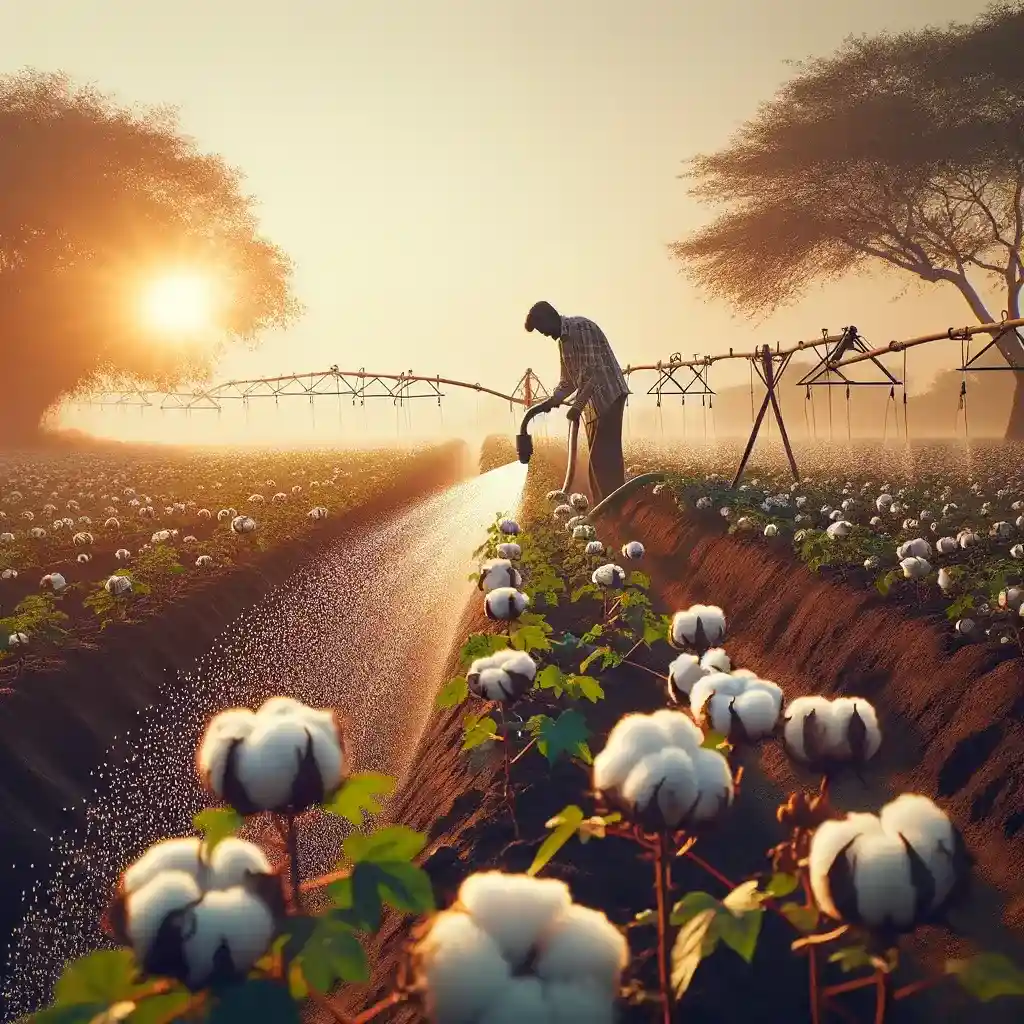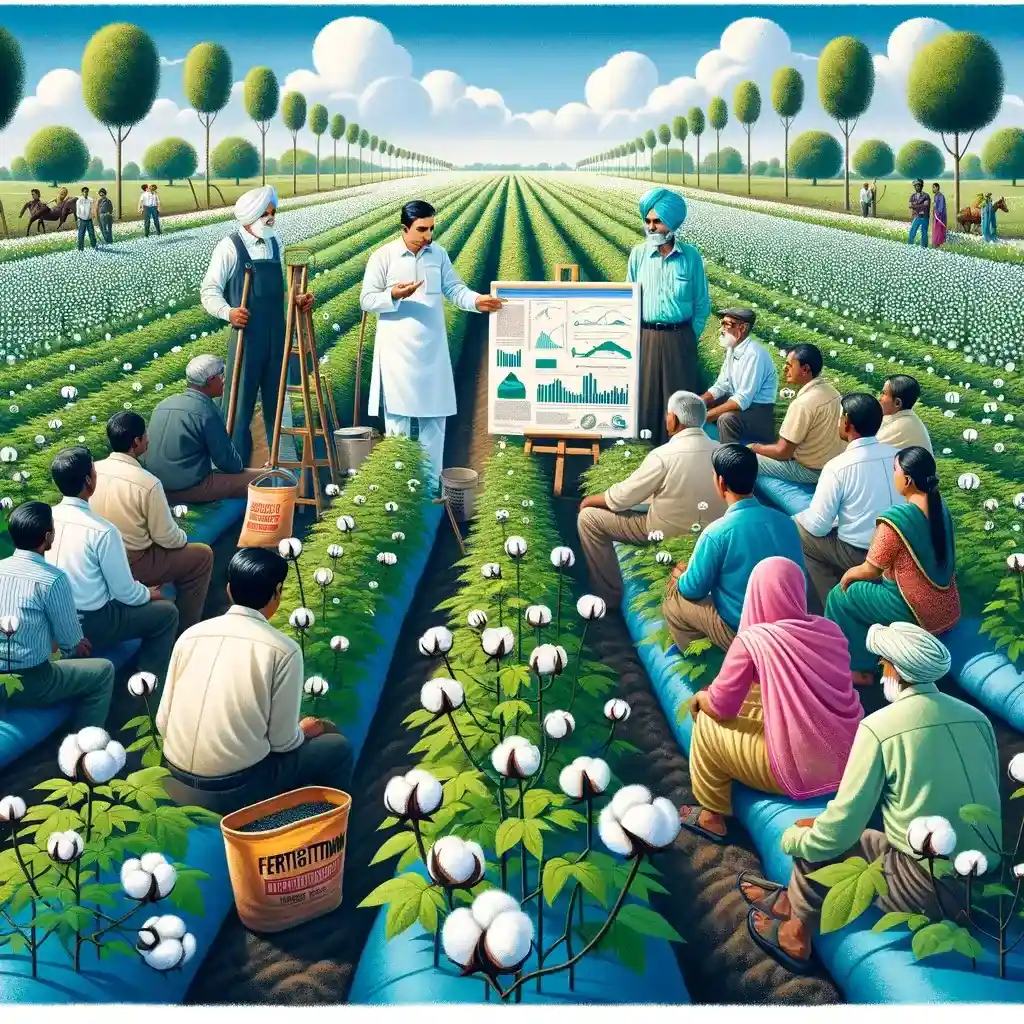The global cotton market reached a value of USD 82.81 billion in 2023 and is set to grow from USD 86.11 billion in 2024 to USD 117.79 billion by 2032. But no matter where they grow it, cotton farmers worldwide face challenges, but in India cotton exports plunge to a 19-year low. To address why has the cotton production plunged in India, we need to understand the main challenges in cotton farming. Here, we’ll share some insights on these challenges.

On average, cotton needs about 50-200 inches of water during a growing season. How will you adapt and continue to farm cotton sustainably when there are water sustainability issues? Can you believe that cotton represents the main source of income for up to 1 billion people, directly or indirectly. With this in mind, how can we improve the yields of cotton? Read for more.
Challenge 1: Pest and Disease Infestations Impacting Cotton Farming
Nearly 20 years ago, Bt cotton, a genetically modified type of cotton was introduced to India to reduce farmers’ insecticide use. This shift to Bt (Bacillus thuringiensis) cotton was a big change in modern cotton farming in India, at first doubling yields from 278 kg per hectare in 2000-01 to 566 kg in 2013-14. Since this plant was introduced, Bt cotton has become very popular across India. Today, at least 80% of cotton farmers in India use Bt technology.
This genetic change was meant to fight pests like the Helicoverpa armigera, or American bollworm. This was a big step towards more sustainable cotton farming. However, the problem with pests wasn’t fully solved. Farmers faced a new issue: the pink bollworm (Pectinophora gossypiella). This pest became a new challenge in cotton farming as it grew resistant to Bt proteins, showing the need for diverse and adaptive pest management strategies.

As non-Bt cotton decreased, the pink bollworm issue increased, making it necessary to rethink how we control pests in cotton farming. This problem shows why it’s important to include practices like organic cotton farming and other sustainable agriculture methods to make cotton growing stronger against these changing threats. By diversifying pest control and using comprehensive solutions, cotton farmers can overcome these significant challenges in cotton farming and move towards a more sustainable and productive future.
Managing pests like the pink bollworm is a must, but is that enough? Another challenge for cotton farmers is the intensive water demands of their crops.
Challenge 2: Water Scarcity and the Need for Irrigation in Cotton Farming
Cotton farming is known for its high water demand, which makes it especially at risk from the growing problem of water scarcity in India. This issue doesn’t just threaten how sustainable cotton production is but also whether you can even start a cotton farm in areas with little water.
To solve this, farmers should adapt modern cotton farming techniques, such as drip or sprinkler irrigation. These efficient watering methods will cut down water use while making sure cotton plants get just the right amount of water for the best growth.

Also, the development of drought-resistant cotton varieties is a pivotal step towards sustainable cotton farming. is a key step towards sustainable cotton farming. For example, CRIS-9, Marvi, NIAB-78, and CRIS-134. These varieties are made to do well in dry conditions, reducing the need for lots of watering and helping preserve water resources. By using these new solutions for age old challenges in cotton farming, farmers can tackle the problems caused by not having enough water and help make sure their cotton farms are sustainable.
At the same time, let’s not forget, Agriculture accounts for 73% of global water usage, cotton is only responsible for 3% of that. So we shouldn’t blame Cotton Farmers for water scarcity 😉
Challenge 3: Soil Health and Sustainable Farming Practices
Continuous cotton cultivation can lead to significant soil degradation, impacting the health and productivity of cotton farms. This degradation results from nutrient depletion and the disruption of soil structure, posing a major challenge for sustainable cotton farming.
To counter this, integrating regenerative cotton farming practices, such as crop rotation, is crucial. By rotating cotton with other crops like legumes, farmers can naturally replenish soil nutrients and maintain its fertility.
Additionally, the use of organic matter and bio-nutrients is vital for improving soil structure and enhancing its water-holding capacity. These practices not only contribute to the overall health of the soil but also support the growth of organic cotton farms. Regular soil testing is another essential practice, enabling farmers to manage nutrients efficiently and tailor their cotton farming fertilizer strategies to meet the specific needs of their soil. Download AgriApp now and try soil testing without a lab visit.
How to improve soil health: Read more here
By using organic fertilisers and biologicals like DNP, PH-50, Total 20 along with sustainable farming practices, cotton farmers can tackle soil health issues well, making sure their cotton farms last a long time and are productive, leading to a more sustainable future in agriculture.
Improving soil health, pests, and water are significant steps, but it’s not going to solve all the farming challenges in cotton. The outdated practices are another villain in cotton farming, demanding a modern approach.
Challenge 4: Low Yield and Quality Due to Outdated Practices in Cotton Farming
Despite progress in modern cotton farming, many farms in India still face problems with low yield and poor quality cotton because of old agricultural practices. These issues are especially tough for new farmers starting a cotton farm, who may not have much experience, and for farmers in rural areas who don’t have access to the latest methods and technologies.
So, farmers should get training on proper fertilization, optimal spacing of cotton plants, and effective weed management, all of which can significantly enhance yields and improve the quality of cotton fibre.
Also, giving access to high-quality seeds is key for sustainable cotton farming. Using certified seeds makes sure that farmers are planting varieties that fit their specific climate and soil conditions, leading to healthier crops and better productivity.
Now that we’ve looked at four major challenges in cotton farming, the next one is about sustainability. Addressing all these will help us raise the overall standard of cotton production in India.
Challenge 5: Adapting to Climate Change and Environmental Pressures in Cotton Farming
Climate change is a big threat to cotton farming, the changing weather patterns and increasing temperatures affect crop growth and productivity. So cotton farmers must adapt and innovate to ensure the sustainability of their cotton farms.
Our government and Agri-scientists should support farmers by developing and promoting climate-resilient cotton varieties, thereby, we can reduce the vulnerability of cotton crops to climate fluctuations.

In addition to breeding efforts, implementing smart agricultural practices is essential for the cotton industry. These practices include precision agriculture techniques to optimise resource use and minimise environmental impact, and strategies like cover cropping and reduced tillage to enhance soil health and water conservation.
By adopting these approaches, cotton farmers can mitigate the challenges posed by climate change and ensure the long-term viability and success of their cotton farms.
Innovative Solutions: Direct-to-Grower Approaches
The Direct-to-Grower approach revolutionises cotton sourcing by establishing a transparent and equitable connection between farmers and the broader supply chain. This approach lets farmers directly involve themselves in negotiations and agreements, fosters sustainable practices, and ensures fair compensation. By cutting out intermediaries and improving traceability, this model makes the cotton farming ecosystem more sustainable and ethical, letting all stakeholders feel the benefits of good practices.
Conclusion: The Road Ahead for Cotton Farming in India
As we’ve seen, the challenges in cotton farming are many – from pests and thirsty soil to climate change. Solving these issues needs everyone’s support, from the farmers in the fields to the policymakers in their offices, and the researchers at universities. By adopting the latest cotton farming techniques, seed varieties, innovative biologicals, and the Direct-to-Grower approach, cotton farmers can overcome the obstacles that threaten their livelihoods.
The future of cotton farming in India depends on adopting sustainable and modern agricultural practices. These practices ensure the long-term success of cotton cultivation and support the communities that depend on this vital crop. With everyone working together and staying committed, the cotton farming sector in India can thrive, ensuring a sustainable future for generations to come.
Looking for more information? AgriApp offers free crop advisory services! Call us now at +91 9108047688. We provide advice in 7 regional languages.